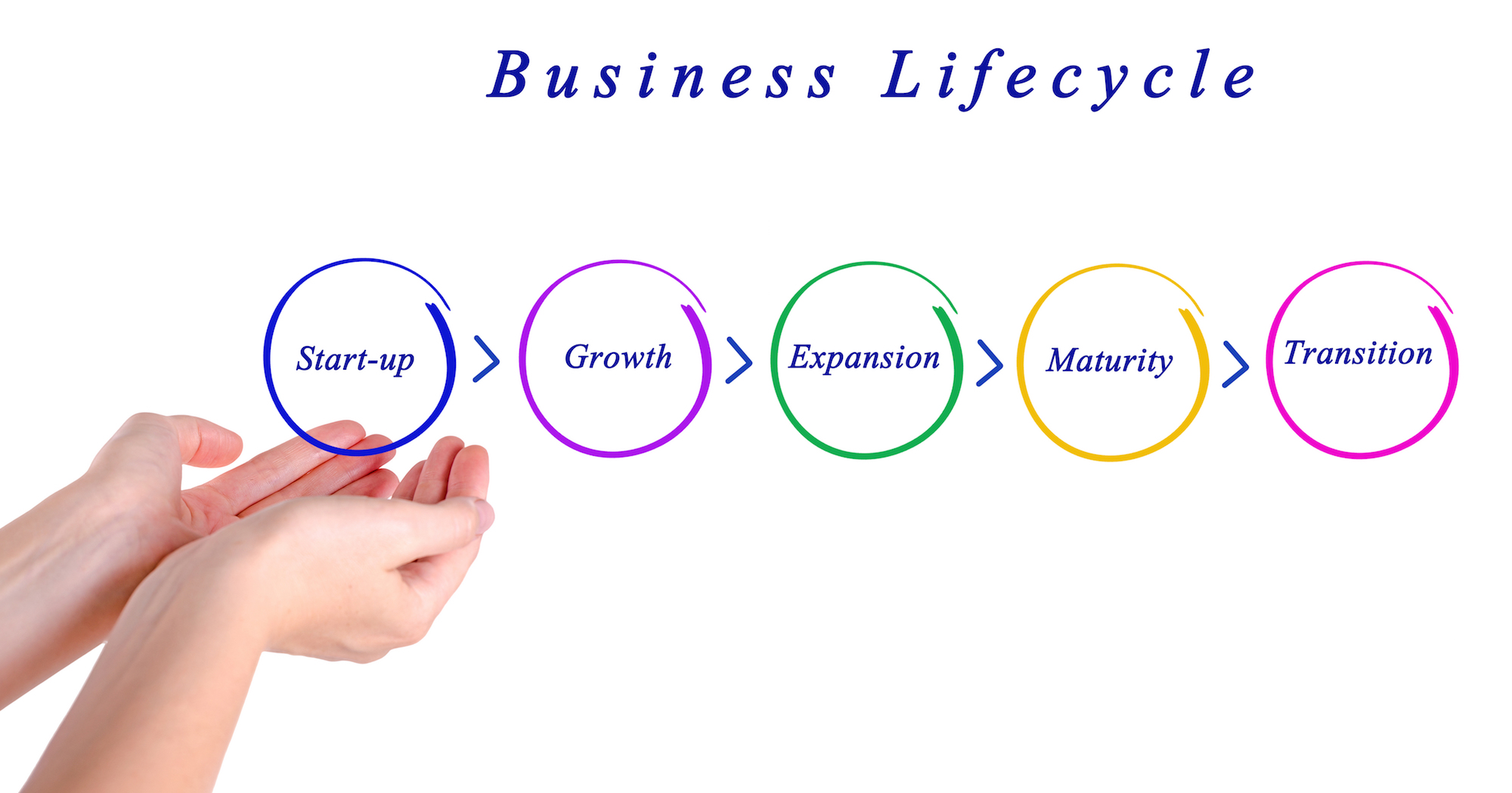The Business Life Cycle
The key to understanding how to improve your small business success
It is not the strongest of the species that survive, nor the most intelligent, but the one most responsive to change. Charles Darwin
The first challenge to anyone wishing to grow their small business is to understand what phase of the Business Life Cycle they are in.
Different experts will argue on how many phases there are, but in essence there are five phases to the Business Life Cycle
The time frame for each phase in the Business Life Cycle varies from business to business – it can be months or years.
Each of these phases present different challenges that a business must deal with. Only by understanding where your small business is in its business life cycle will you understand what areas you need to develop.
- Concept & Start Up
- Growth
- Maturity
- Decline
- Rebirth or Death


Concept and Small Business Start Up
Concept
All new businesses begin with an idea. The problem is that either somebody else has already thought of the same thing or someone will copy your idea within a short period of time.
Before Start Up, business owners should prepare a Business Plan to help guarantee success in this phase of the Business Life Cycle.
Small Business Start Up
Once a business has entered the small business start up phase of the Business Life Cycle, business owners usually have three big areas of concern:
- Attracting Customers
- Improving Cash Flow
- Increasing Profits
Those businesses that prepared a Business Plan and use it during this phase generally have systems and processes in place to manage these concerns.
Those that didn’t need to put strategies, policies and procedures in place to address these concerns to successfully get through this phase and shorten it.
Growth
The business kicks off. Sales (and hopefully Profits) start to climb. New employees are hired. New equipment is purchased. Cash Flow is usually tight.
In many small businesses, problems which could shorten both the Growth and Maturity phases of the Business Life Cycle and head the business quickly into the Decline phase start to appear:
- Sales aren’t increasing fast enough to generate the required cash flow
- The same mistakes that occur again and again
- Fire fighting becomes the norm as the urgent takes priority over the important
- Deadlines are missed more and more frequently
- Unclear roles and responsibilities cause confusion and lead to a “blame game”
- Important strategic projects don’t get done
- Frustration produces rising tension and periodic blow-ups
Often during this phase of the Business Life Cycle, businesses can also be seen as being “victims of their own success”:
- They don’t want any more customers as they are struggling to manage the customers they have
- There is no longer the spare capacity to overcome business inefficiency
- Owners are working longer and longer hours just to cover the gaps
- Customer service goes out the window
- Sales are good, but profit is stagnant or declining
- Sales growth is starting to slow
Now is the time to get serious about introducing even more policies and procedures into the business to protect the business and be able to survive through this phase.
Three main areas of a business need to be addressed in this phase of the Business Life Cycle if a business is to survive:
- Basic Employee Systems
- Business Process Improvement in the key areas
- Implementation of a Marketing Strategy and Action Plan to attract and retain the right customers
If the concerns mentioned under “Start Up” above have not been addressed, these may need to be addressed first as they provide the foundations of survival.
In other words, it is time to start working on your business, rather than in it!
Maturity
This is the “complacent” phase of the Business Life Cycle, which is generally characterised by:
- The owner is comfortable with their achievements
- Everything is running smoothly
- Sales are at a manageable level and holding
- Profits may be increasing as the business continues to get more efficient
- The owners don’t see any need to make significant changes to their business
This is a very dangerous time for a business. With the foot off the accelerator and driving in a straight line, the business is just coasting along. But, just like a car, the business will eventually come to a stop or miss a bend and crash.
At this point you could decide to sell your business as it will have reached its peak resale value. But if you decide to keep running your business, you need to understand that the long term success of a business depends on constant renewal. Without rejuvenation your business will entire the Decline phase and ultimately the Death phase of the Business Life Cycle.
Key factors to rejuvenate your business are:
- Introducing new Products or Services
- Attracting new customers
- Ensuring you always stand out from the competition
- Implementation of new technologies to improve customer service
Sometimes when a business owner gets complacent, they have difficulty thinking of things that could be done to keep the business moving.
Decline
Once the Decline phase of the Business Life Cycle starts, it is usually only reversible towards the beginning of the decline. It also requires a lot of effort and usually radical change and capital expenditure as well.
Typical symptoms of a mature business going into the Decline phase are:
- Increasing overdue days on Accounts Payable and Accounts Receivable
- Betrayal of trust between employees and management
- Long-term planning is replaced by short-term crisis management
- Increasing absenteeism and/or employee turnover
- Declining Sales
- Plummeting profits
- Owners focus on making everyone else change
Once a business goes too far into this phase of the Business Life Cycle, it is too late to think about selling because there is nothing to sell left.
Business Coaching may help in this phase, but it does require a real commitment of business owners to change the way they have done things and for them to be prepared to make radical changes.
Rebirth or Death
Given early intervention, a business in decline can resurrect itself. However, this will usually involve a significant investment in the business. For a pub or a hotel this could be a major venue improvement program, for a service provider it might be re-branding combined with a new Marketing Strategy or investment in equipment.
Rebirth
For a business that has made it out of the decline and managed to resurrect itself, things can be exciting again as the rebirth kicks off.
However, there is usually a new set of challenges to face:
- There may be more stakeholders in the business
- Competitors may start to fight back
- The organisational structure of the business may change
The business owner will be aware that the phases they went through earlier will repeat themselves but this time there is more at stake if things go wrong. However, they have learnt what they don’t know and will be looking for support and advice to ensure they continue to learn.
Death
Businesses that don’t turn around in the Decline phase of the Business Life Cycle will inevitably reach a point when they will be forced to close the doors.
How can you tell if you have reached that stage?
- You haven’t paid wages on time for more than 3 months
- Your overdraft has been maxed out for more than 6 months
- You owe suppliers more than your customers owe you
- Your Balance Sheet has significantly more Liabilities than Assets
- You haven’t been able to pay your ATO obligations for more than 3 months
- Your business has been running at a loss for more than 6 months
If your business has the above symptoms, you should contact your accountant who is best placed to advise you on the steps you may need to take.
